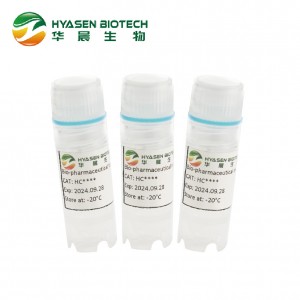
Dnase assay Kit (Fluorescence)
Description
The DNase detection kit is based on a fluorophore-labeled DNA probe. When the sample does not contain DNase activity, the probe is stable and does not produce a fluorescent signal; when the sample contains DNase activity, the probe is degraded, resulting in a gradual enhanced fluorescence signal; the rate of increase in fluorescence signal is positively correlated with the number and activity of enzymes. Use a fluorescence microplate reader to measure at the wavelength of ex/em=485/525nm to determine whether the sample iscontaminated by DNase
Chemical Structure

Kit composition
| Name | 48Test | 192Test |
| 10×reaction solution | 0.5mL | 2.0mL |
| DNA probe | 1tube | 1tube |
| TE buffer | 0.5mL | 2.0mL |
| DNase I standard (2U/μL) | 10μL | 20μL |
| Standard Dilution Buffer | 6mL | 12mL |
| DNase&RNase-free water | 25mL | 25mL |
| DNase RNase away | 50mL | 50mL |
Specification
| Test Items | Specifications |
| Appearance | Complete packing and no liquid leak |
| Detection limit | DNase I: 1.25x10-6 U/μL |
| Precision | Intra assay CV ≤ 10% |
Transportation and storage
Transportation: Dry ice
Storage: Store at -25~-15°C(avoid repeated freezing and thawing)
Recommended re-test Life: 1 year
related products
Write your message here and send it to us














